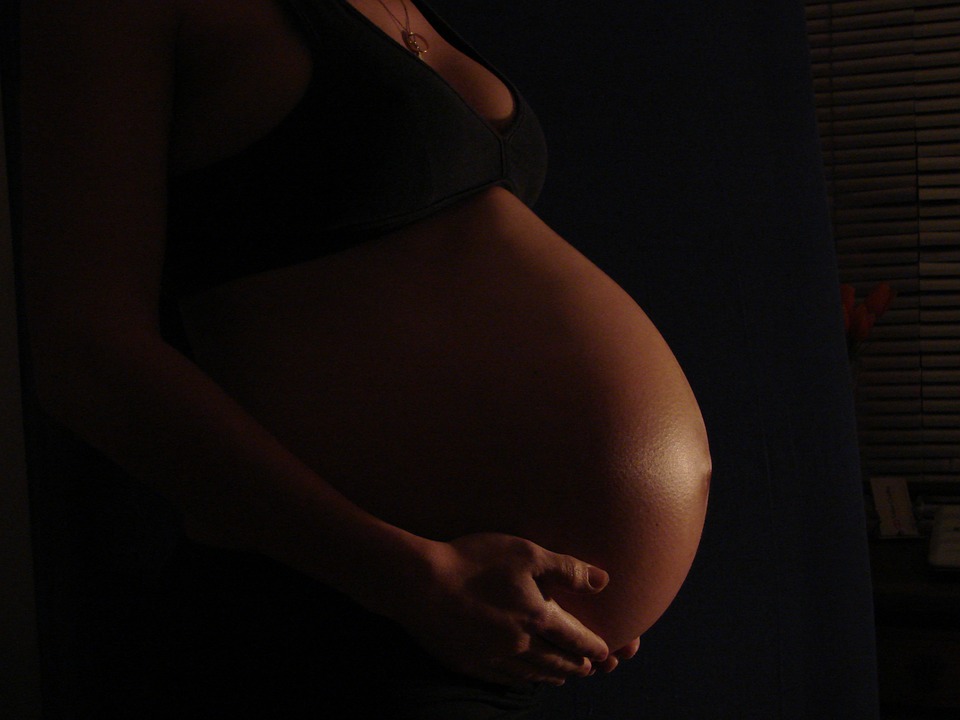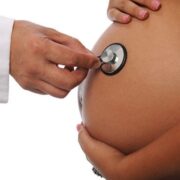Fertility Expert, Dr. Abayomi Ajayi On A Woman’s Chances Of Getting Pregnant At 40 And Above

A fertility specialist Dr. Abayomi Ajayi has shared on a woman’s chances of getting pregnant at 40 and above naturally. According to the expert, if you are over 40 you can still conceive naturally; however, your chances of getting pregnant would have decreased significantly over the decades.
As a woman, your fertility begins to decline around the age of 30, and becomes more rapid at 35 until age 40, when your fertility has reduced by half.
When you’re around 30 years old or so, there is a 25 per cent chance of getting pregnant per cycle compared to when you’re 40 and have a 10 per cent chance of getting pregnant per cycle.
So why are your chances of getting pregnant decreasing? The explanation is quite straightforward. As a woman, you were born with all your eggs which could be 300,000 – 400,000 and certainly a decline in fertility is natural because there is a decrease in the number of eggs with time.
So at 40 you probably still have around 10,000 eggs, which is just three or four per cent of the original 300,000 – 400,000 present at the onset of puberty.
The follicles that form the eggs also accumulate mutations overtime – meaning that there is a breakdown of DNA repair mechanisms – so the rate of failed fertilisation, miscarriage and birth defect increases as you get older.
One of the ways to increase your chances of getting pregnant at 40 quickly is to make sure that you are having unprotected sex at the right time in your cycle.
However, if you have tried everything and failed to get pregnant after six months or more of regular unprotected sex, you need to seek medical advice along with your spouse or sex partner.
As your chances of falling pregnant naturally over 40 is now below 10 per cent, you can increase your chances with assisted reproductive technologies such as IVF.
SEE ALSO: What You Should Know About Getting Pregnant After 35
Older women like you could opt to use their own eggs, if they are still viable and do not need to consider egg donation option. Such women have achieved pregnancy with IVF using their own eggs.
However, it is important to note that your chance of IVF success is dependent on your own specific circumstances. Factors like your medical history and fertility all need to be considered.
We can help eliminate genetic disorders. New technology has made it possible for us to identify embryos that can bear some diseases in life, so we can easily identify and select the embryos that are free. We call it Pre-implantation Genetic Diagnosis.
It is the process of removing a cell from an in vitro fertilisation embryo for genetic testing before transferring the embryo to the uterus. Pre-implantation Genetic Screening is the process of testing for overall chromosomal normalcy in embryos.
We know that we all have 23 pairs of chromosomes in our cell nuclei. The last pair is the sex chromosomes, so one of the things you also get from that is you can tell the gender of the embryo from that when you can see these 23 pairs of chromosomes. Before a few years ago, we could only see about five pairs of chromosomes, but now with technology we can see all the 23 pairs. So apart from gender we can look at every disease that the embryo can be predisposed to.
Expectedly, older women are worse off with IVF. But with high-tech advancements such as PGD and PGS, we can improve their chances but they need to have sufficient number of embryos for the selection process to be possible.
In screening, we are looking at the number of chromosomes and their arrangement because we have seen that the greatest reason why IVF fails is because there are problems in the arrangement of the chromosomes.
We now know that 70-75 per cent of embryos produced in our labs can never become babies because of this problem that increases with the age of the woman and this is one of the reasons why we say older women are worse off with IVF and with reproduction generally.
We have seen why it is so now, especially with the structural or numerical errors in the arrangement of chromosomes, so one is able to pick out the ones that cannot become babies to start with, apart from the ones that have diseases. We can tell which is which.
There are some diseases that we have been able to see their profile. In Sickle Cell Disease, for instance, it is just one amino acid replacing another. We can see that amino acid has a problem. We can see if some embryos have Down’s syndrome. There are about 600 diseases, including cancers that we have been able to see what their profiles look like, so we can identify such disorders and we do not use such embryos.
The diseases that PGD can diagnose are called single gene disorders. When it is one gene that has a disorder all you need to do is find that gene and that is why the profile of the disease has been identified. We are always saying that diseases require external factors for them to manifest; those are the ones you are in control of to make sure that you do not feed the illness.
There are many gene mutations, every normal person carries three to five mutations; it is normal. The problem only comes when we marry somebody who has the same mutations like we do, so we turn from being carriers into having offspring that exhibit the disease. This can be used also in people that are using donor eggs as well as own eggs.
You could be a healthy woman who is carrying mutations in your genes. You are normal and healthy, but the problem only comes if your husband or the husband of the woman that wants to use your egg carries the same mutation.
Then the baby they are going to have will be born with the disease. A good example is albinism. That’s why two people who are not albinos can produce an albino child because they both carry the albino gene even though they are not manifesting as albinos.
IVF could fail for several reasons and for it to succeed for you; you need to make decisions that may not be easy sometimes.
READ ALSO: EXCLUSIVE! Pregnant at 40! Mumpreneur Ng Founder, Mofolusade Sonaike Tells Her Beautiful Story
For instance, at 46, it may not be reasonable to insist on doing IVF using your own eggs after all the tests have shown that your eggs are unviable and you need to use donor eggs. We know that the success rate of a 46-year-old using her own eggs is less than five per cent.
For you to succeed with IVF, you need to listen to your doctors, ask questions and try to make informed decisions. The work of a good IVF clinic is to support you make these decisions. That is why we have counsellors, acupuncturists, all kinds of specialists that can help you come to terms with these decisions. We do not want you to be pushed into making these decisions.
You need to look at the implications. Even saying you do not want any treatment is a decision, but are you sure you know the implications? These are things the counsellors will help you with. And even if you make the right decision, if you are below 35, be prepared to do two IVF cycles. If you are above 35, be prepared to do three cycles of IVF because IVF does not mean we have kept a baby somewhere to give to you. It is better to be prepared to go the full journey.
Some couples are lucky. They do one cycle and conceive. Some others have done two to four cycles and have two to four babies and we have those that have done more than five cycles and have no baby to show. So many things are involved.
If the clinic is good, it is the husband and wife that are actually the determinants of their own success because it is the sperms and eggs that you give us that we can work with. Everybody contributes to their own success rate, the quality of the sperm and eggs.
Technology can help the sperm, but there is nothing that can be done about the egg. The quality of the egg is the priority in determining the success.


